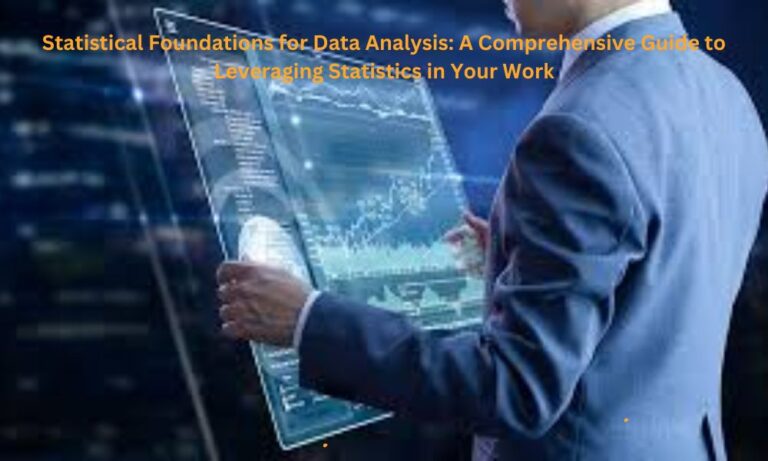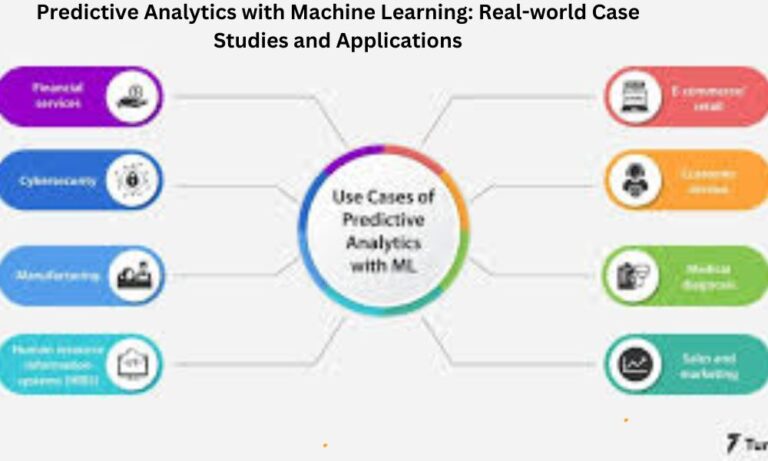Data Security in the Age of Analytics: Best Practices
Data serves as the backbone of decision-making processes, so ensuring its security is paramount. As businesses embrace analytics to derive insights and stay competitive, they must also fortify their defenses against evolving cyber threats.
This post is about the best practices for data security in the age of analytics, covering encryption, access controls, regulatory compliance, and emerging technologies.
Data security stands as a cornerstone in the realm of analytics, safeguarding sensitive information from unauthorized access, manipulation, or theft.
With the proliferation of data breaches and cyberattacks, organizations face escalating risks to their data integrity and reputation. Hence, understanding and implementing robust security measures are imperative to mitigate such threats effectively.
Table of Contents
Understanding Data Security
Data security encompasses a multifaceted approach aimed at protecting data assets throughout their lifecycle. It involves safeguarding data at rest, in transit, and use, thereby ensuring its confidentiality, integrity, and availability. Key components of data security include encryption, access controls, data masking, incident response, and regulatory compliance.
Encryption: Safeguarding Your Data
Encryption serves as a foundational technique in data security, rendering data indecipherable to unauthorized parties. By encoding data using cryptographic algorithms, organizations can prevent unauthorized access and mitigate the impact of data breaches. Two primary types of encryption protocols include:
- Symmetric Encryption: In symmetric encryption, the same key is used for both encryption and decryption processes, offering simplicity and efficiency in data protection.
- Asymmetric Encryption: Asymmetric encryption employs a pair of public and private keys for encryption and decryption, respectively, enhancing security by minimizing key exposure risks.
Implementing encryption mechanisms within data analysis workflows ensures end-to-end protection of sensitive information, bolstering data confidentiality and compliance with regulatory mandates.
Access Controls: Restricting Unauthorized Access
Access controls play a pivotal role in regulating user permissions and enforcing least privilege principles. Role-Based Access Control (RBAC) assigns access rights based on users’ roles and responsibilities, limiting access to only essential resources. By implementing granular access controls and authentication mechanisms, organizations can mitigate insider threats and unauthorized data access.
Monitoring and auditing access activities enable organizations to track user behavior, detect anomalies, and respond promptly to potential security incidents. By enforcing stringent access controls, organizations can mitigate the risk of data breaches and unauthorized data exfiltration.
Secure Data Analytics Frameworks
As organizations leverage analytics to derive actionable insights, integrating security measures within analytics frameworks becomes indispensable. Secure data analytics frameworks provide a comprehensive ecosystem for data processing, analysis, and visualization while prioritizing data security and privacy. Key considerations for secure data analytics frameworks include:
- Integration of Security Measures: Secure analytics frameworks incorporate encryption, access controls, and audit trails to ensure data confidentiality and regulatory compliance.
- User-Friendly Interfaces: Intuitive interfaces and visualization tools empower users to analyze data securely without compromising usability or performance.
- Scalability and Performance: Scalable architectures enable organizations to process and analyze vast datasets efficiently while maintaining optimal performance and responsiveness.
By adopting secure data analytics frameworks, organizations can harness the power of data analytics while mitigating security risks and ensuring regulatory compliance.
Data Masking and Anonymization
Data masking and anonymization techniques enable organizations to anonymize sensitive information while preserving data utility and integrity. Strategies for data masking include:
- Tokenization: Tokenization replaces sensitive data elements with randomly generated tokens, thereby preventing unauthorized access to sensitive information.
- Dynamic Data Masking: Dynamic data masking selectively masks sensitive data based on users’ access privileges, ensuring data confidentiality without altering underlying data structures.
Anonymization techniques such as k-anonymity and differential privacy enable organizations to anonymize datasets effectively while protecting individuals’ privacy rights. By implementing robust data masking and anonymization strategies, organizations can minimize the risk of data exposure and regulatory non-compliance.
Incident Response and Recovery
Developing an incident response plan is crucial for organizations to mitigate the impact of data breaches and security incidents. An effective incident response plan includes:
- Incident Detection and Notification: Implementing monitoring tools and alert mechanisms enables organizations to detect security incidents promptly and notify stakeholders.
- Containment and Remediation: Upon detecting a security incident, organizations must contain the breach, mitigate ongoing threats, and remediate affected systems and data.
- Forensic Analysis and Lessons Learned: Conducting forensic analysis helps organizations identify the root cause of security incidents, assess the extent of data exposure, and derive actionable insights to enhance future incident response efforts.
By proactively developing and testing incident response plans, organizations can minimize downtime, mitigate financial losses, and preserve stakeholder trust in the event of a security incident.
Regulatory Compliance in Data Security
With the proliferation of data protection regulations such as GDPR, CCPA, and HIPAA, ensuring regulatory compliance is paramount for organizations operating in diverse industries. Key considerations for regulatory compliance include:
- Data Governance and Privacy Policies: Establishing robust data governance frameworks and privacy policies enables organizations to define data handling practices, ensure data integrity, and mitigate compliance risks.
- Data Subject Rights: Compliance with data protection regulations requires organizations to respect individuals’ rights regarding data access, rectification, and erasure, thereby fostering transparency and accountability in data processing activities.
- Data Protection Impact Assessments (DPIA): Conducting DPIAs helps organizations assess the potential risks and impacts of data processing activities on individuals’ privacy rights, enabling informed decision-making and risk mitigation strategies.
By aligning data security practices with regulatory requirements, organizations can foster trust with customers, minimize legal liabilities, and uphold ethical standards in data handling.
Employee Training and Awareness
Employees serve as the first line of defense against internal and external threats to data security. Providing comprehensive training and awareness programs empowers employees to recognize and respond to security threats effectively. Key components of employee training and awareness include:
- Security Awareness Training: Regular training sessions educate employees about common security threats, phishing attacks, and best practices for data protection and incident response.
- Social Engineering Awareness: Training employees to recognize social engineering techniques helps mitigate the risk of phishing attacks, pretexting, and other forms of manipulation.
- Incident Reporting Mechanisms: Establishing clear incident reporting procedures enables employees to report security incidents promptly, facilitating timely response and resolution.
By fostering a culture of security awareness and accountability, organizations can empower employees to become proactive stewards of data security and privacy.
Emerging Technologies in Data Security
Advancements in technology continue to drive innovation in data security, offering new opportunities to enhance protection against evolving threats. Emerging technologies in data security include:
- Artificial Intelligence (AI) and Machine Learning: AI-powered security solutions enable organizations to detect and respond to security threats in real time, augmenting human capabilities and automating threat detection and mitigation processes.
- Blockchain Technology: Blockchain technology offers decentralized and tamper-resistant data storage solutions, ensuring data integrity and immutability in transactional systems, supply chains, and identity management platforms.
- Homomorphic Encryption: Homomorphic encryption enables computations on encrypted data without decrypting it, preserving data privacy and confidentiality while facilitating secure data analysis and collaboration.
By embracing emerging technologies, organizations can stay ahead of cyber threats, strengthen their security posture, and adapt to dynamic business environments effectively.
Case Studies: Successful Data Security Implementations
Real-world examples of successful data security implementations highlight best practices and lessons learned in safeguarding sensitive information. Case studies showcase:
- Financial Services Sector: Banks and financial institutions leverage encryption, access controls, and anomaly detection technologies to protect customer data, mitigate fraud, and comply with financial regulations.
- Healthcare Industry: Healthcare organizations implement data masking and encryption to secure electronic health records (EHRs), ensuring patient privacy and compliance with healthcare regulations.
- E-commerce Platforms: E-commerce companies adopt secure analytics frameworks and AI-powered fraud detection systems to protect customer payment information and enhance transaction security.
Learning from successful implementations provides organizations with insights into effective strategies, technologies, and best practices for data security in diverse industries.
Conclusion
Securing data in the age of analytics is not just a compliance requirement; it is a strategic imperative for organizations aiming to thrive in a digital landscape. By adopting best practices such as encryption, access controls, data masking, and incident response, organizations can fortify their defenses against cyber threats, preserve stakeholder trust, and ensure the integrity and confidentiality of their data assets.
Frequently Asked Questions
How does encryption contribute to data security in analytics?
Encryption plays a crucial role in data security by encoding sensitive information, making it indecipherable to unauthorized parties. In analytics, encryption safeguards data at rest, in transit, and in use, ensuring confidentiality and compliance with regulatory mandates.
What are the key components of a robust incident response plan?
A robust incident response plan includes incident detection and notification, containment and remediation, forensic analysis, and lessons learned. It aims to minimize the impact of security incidents, preserve stakeholder trust, and enhance future incident response efforts.
How can organizations balance data usability and privacy through data masking?
Organizations can balance data usability and privacy through techniques such as tokenization and dynamic data masking. These methods allow organizations to anonymize sensitive information while preserving data utility and integrity.
What role does employee training play in data security?
Employee training is crucial in data security as employees are the first line of defense against security threats. Security awareness training, social engineering awareness, and incident reporting mechanisms empower employees to recognize and respond to security threats effectively.
What are the benefits of adopting emerging technologies like AI and blockchain in data security?
Emerging technologies such as AI and blockchain enhance data security by automating threat detection and response, ensuring data integrity and immutability, and facilitating secure data analysis and collaboration. These technologies empower organizations to stay ahead of evolving cyber threats and strengthen their overall security posture.



